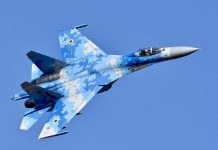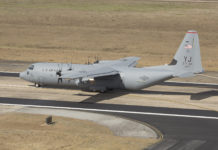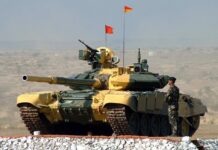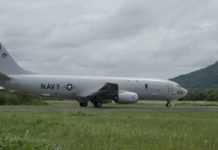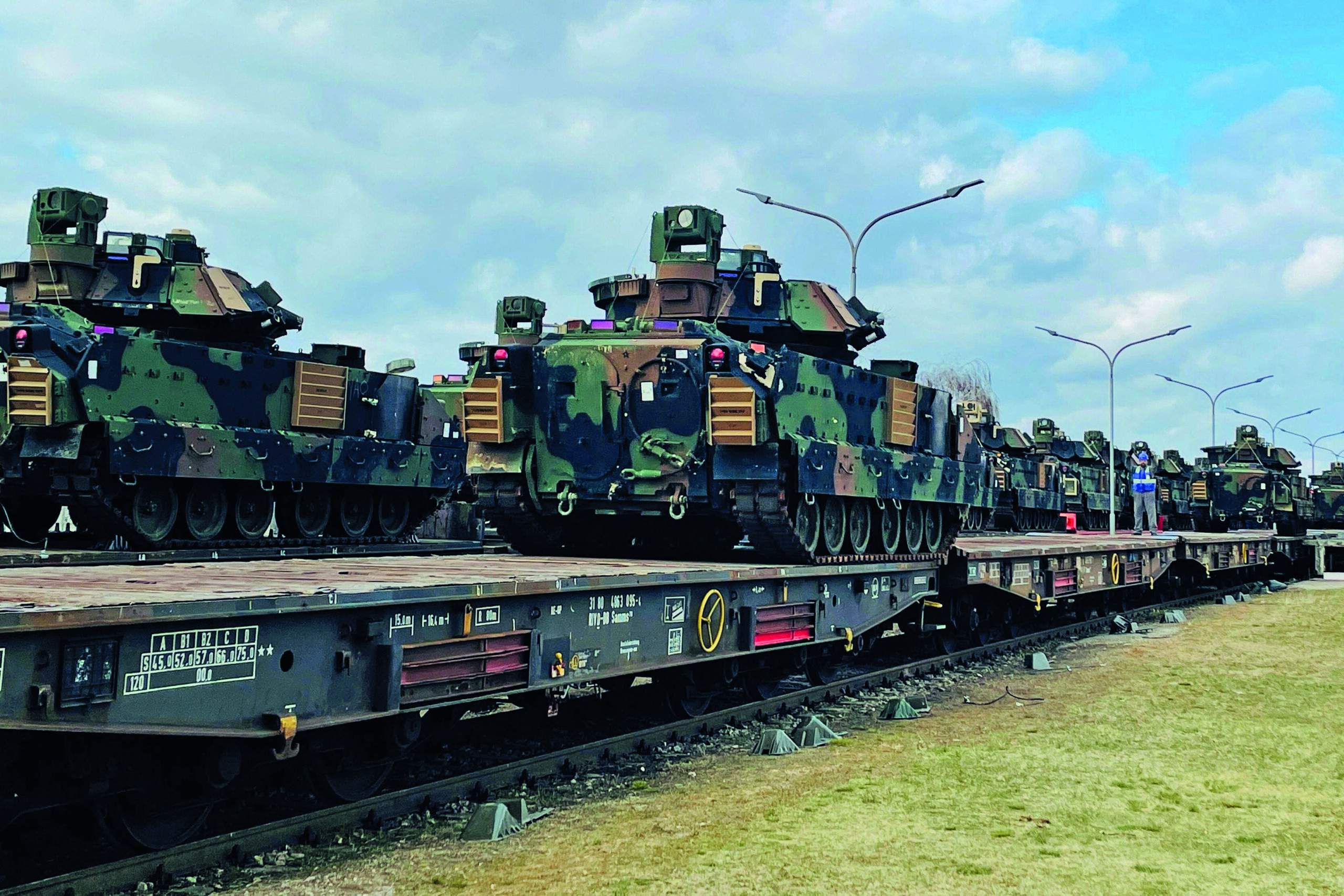
Urgency and Importance in pre-positioning Equipment and Supplies
Tim Guest
In the light of Russia’s invasion of Ukraine, NATO has drawn up and announced its New Strategic Concept, which, amongst many things, reaffirms existing alliance values and its assurance of collective defence underpinned by credible and rapidly available reinforcements, enhanced command and control and, crucially, pre-positioned equipment.
For any troops deploying to a distant theatre of operations, to be able to hit the ground running and perform tasks with optimum effect immediately on arrival is of paramount importance. Waiting for vital equipment assets, vehicles and materiel supplies to join the troops before they can get to work is not an option. Hence, a core element of NATO support in Europe is therefore pre-positioned stock. The US Army established its Army Pre-positioning Strategy in the early 1960s and called it POMCUS – the ‘Pre-positioning of Materiel Configured in Unit Sets’. Today, pre-positioning falls under the banner of Army Pre-positioned Stocks (APS), intended to support any strategic global power projection plans by the US and its allies.
A NATO Fundamental
On 29 June 2022, NATO Heads of State and Government participating in the meeting of the North Atlantic Council in Madrid issued a statement endorsing the Alliance’s new Strategic Concept, drawn up due to the new and developing security environment facing the Alliance. The June statement described numerous aspects of the new concept, one of which outlined a ‘new baseline for deterrence and defence posture’, which will rely heavily for its success on effective pre-positioning of equipment. It stated, ‘NATO will continue to protect our populations and defend every inch of Allied territory at all times. We will build on our newly enhanced posture, and significantly strengthen our deterrence and defence for the long term to ensure the security and defence of all Allies… Allies have committed to deploy additional robust, in-place, combat-ready forces on our eastern flank, to be scaled up from the existing battlegroups to brigade-size units where and when required, underpinned by credible, rapidly-available reinforcements, ‘pre-positioned equipment’, and enhanced command and control … We will enhance our collective defence exercises to be prepared for high intensity and multi-domain operations and ensure reinforcement of any ally on short notice. All these steps will substantially strengthen NATO’s deterrence and forward defences. This will help to prevent any aggression against NATO territory by denying any potential adversary success in meeting its objectives.’
Today, the US Army’s Pre-positioned Stock programme is a cornerstone of its ability to rapidly project power and send a clear signal of US commitment. Sets of equipment, such as all the tanks and wheeled vehicles of an armoured brigade combat team, are strategically pre-positioned in climate-controlled facilities, worldwide. These stocks, identified as APS-1 (US), APS-2 (Europe), APS-3 (Afloat), APS-4 (Northeast Asia), and APS-5 (Southwest Asia), are available to support all combatant commanders’ missions, not only operationally, but also for major exercises and humanitarian missions.
Pre-positioning Evolves
In Europe, pre-positioned POMCUS assets have had an evolving presence throughout the Cold War and since, so pre-positioned stocks in the European theatre of operations are more mature than those in regions like the Indo-Pacific theatre. However, with the rise of a hostile China, establishing more APS in the APAC region is becoming increasingly urgent and while APS already exist in locations such as Japan and South Korea, the whole Pacific Theatre requires a more comprehensive constellation of sites, such as those now in Europe aimed at deterring Russia. This will require the US Army and its allies to agree on establishing powerful new sites that will help act as part of the deterrence ‘whole’ against China, as well as bolstering the west’s own interests and influence in the region. Unlike Europe, however, the force structures and equipment relevant to Pacific operations differ and APS, as a result, will differ, especially as smaller materiel sets will be needed in more numerous locations, with equipment relevant to the region’s geography.
Challenges Impacting APS Effectiveness
As a result of protracted wars and post-war operations involving US and allied forces during the first two decades of the 21st Century, capabilities and readiness of US forces in Europe have, to a degree, been eroded as APS stocks have been commandeered, piecemeal, by constant needs from units in Afghanistan and Iraq, where much equipment was either damaged or destroyed. As a result, modernising these resources has been a major ongoing requirement. One of the challenges of maintaining an effective pre-positioned stock is ensuring that it keeps up with equipment modernisation and upgrades. Units arriving in theatre to use APS need vehicles and systems with which they are familiar, ideally exactly the same as they operate day to day and are trained to use. Any lag between issuing a unit with new equipment and the pre-positioning of the same, will hinder rapid deployment and the immediate effectiveness against an already mobilised enemy.
Cold War Lessons
During the Cold War, large amounts of US military supplies and equipment were stored at various locations in West Germany under the POMCUS programme. As part of the US Army’s general defensive plan for Europe within the context of NATO, this pre-positioned stock materiel was stored in unit configurations so that, in the event of hostilities breaking out with the Soviet Union and Warsaw Pact nations, US troops deployed by plane from the US could hit the ground running when they arrived, using the primed and oven-ready kit waiting for them.
Initially, equipment such as vehicles stored under POMCUS was largely maintained in outdoor, above-ground locations, fenced off for protection under guard. Eventually, from the 1960s until the fall of the Soviet Union, those outdoor facilities were upgraded to covered warehousing where combat-readied armour and other kit was protected not only from the elements – thereby lowering maintenance requirements – but also shielded from electro-magnetic pulse (EMP) radiation that would damage electronics, ignition systems, as well as communications equipment; such an attack by the Soviets was expected to take place in the early stages of any conflict at that time.
At the end of the Cold War, however, the POMCUS programme began to expire, as a naïve west believed the threat from the east no longer existed. Some kit did, however, remain in theatre, enough to equip three, or so, brigades under an evolved strategy of APS. In more recent time, APS have provided ready training sets for deployed forces on major joint NATO exercises. In the 1980s and 1990s, REFORGER exercises tested troops arriving from the continental US (CONUS) in, amongst other skills, the use of APS stocks, providing them with the experience of deploying and collecting equipment from various APS locations. REFORGERs ended in 1993, giving way more recently to Exercise DEFENDER, the latest of which – DEFENDER EUROPE 2022 — took place during May alongside Exercise SWIFT RESPONSE, and was conducted over nine NATO territories, with both exercises involving some 18,000 troops from 20 NATO members. The deployment, use and testing of APS resources and the whole pre-positioning structure is a major reason for these manoeuvres.
Why We Need APS
In response to the 2014 annexation of Crimea, the US and its NATO allies undertook to bolster security in Central and Eastern Europe with an increased rotational military presence, additional exercises such as DEFENDER, as mentioned, and training with allies and partners. In addition, enhanced pre-positioning of US equipment among alliance members has been undertaken in recent years. This brings us to the present and Russia’s terrible and ongoing hostilities against Ukraine. At time of writing, the importance of APS in preparation for potential large-scale, ground combat operations has escalated rapidly and underlines the raison d’etre for APS: if heavy forces can deploy rapidly during the early stages of a conflict, this may be enough to disrupt enemy plans and avert potential disaster. Combining rapid air movement of US ground troops arriving from CONUS with mission-ready APS can deliver ready and fully operational armoured and mechanised units to the battlefield, quickly. As the first engagement of a conflict is critical, for US Forces to be able to join their NATO counterparts in Europe as rapidly as possible will be crucial in so many aspects. To arrive in theatre and collect modern, familiar, ready-and-waiting equipment, and then deploy quickly to the fight can prove decisive, either by defeating, or certainly delaying enemy forces. Any lack of APS in critical locations and scenarios may result in first battle defeats, as well as potentially costly, strategic complications.
And since 24 February, Europe and NATO have been on a war footing; certainly, a new Cold War footing, though awareness to, and preparations for, what was about to happen were discretely well underway well before the first shot was fired. As well as the various levels of Allied responses in bolstering the Ukrainian military with equipment and supplies destined for the front, NATO has shifted several gears deploying troops and materiel to, from and around the alliance, including from APS locations in Germany, to those member states, such as the Baltics, on NATO’s eastern flank.
February 2022 – A Month that will Live in Infamy
US intel at the start of the year about Russia’s impending invasion of Ukraine was spot on. So, it will come as no surprise that in the second week of February, in Kaiserslautern, Germany, with effectively no notice, the US 405th Army Field Support Brigade (AFSB), had already been tasked with outfitting an entire armoured brigade combat team that was being deployed to Europe from CONUS. To do so, the 405th fully activated its Army Pre-positioned Stock-2 sites for the first time in its APS-2 programme history. The 405th AFSB is assigned to US Army Sustainment Command and is under the operational control of the 21st Theater [sic] Sustainment Command, US Army Europe and Africa. The brigade is headquartered in Kaiserslautern and provides materiel enterprise support to US Forces throughout Europe and Africa, providing theatre sustainment logistics, acquisition synchronisation, logistics and technology, and joint force support.
In that first half of February, before the war started, hundreds of vehicles and pieces of equipment were prepared and moved from the respective APS-2 sites overseen by the four battalions assigned to the 405th AFSB. Once that ‘extraction’ phase of the activity was complete the AFSB was tasked with supporting the 1st Armoured Brigade Combat Team (ABCT), 3rd Infantry Division, which deployed by air from Fort Stewart, Georgia, to Germany. Drawing on the APS-2 equipment and vehicles, mostly from the Coleman work site in Mannheim, has been conducted at the direction of the Commander, US European Command, US Army Europe and Africa.
During the initial draw of APS-2 in early February, more than 600 pieces of equipment, including HUMVEEs, heavy expanded mobility tactical trucks, medical equipment, generators, containerised systems, construction equipment and other support and sustainment equipment was drawn from the 405th AFSB’s APS-2 sites and sent forward to US forces to augment command and control, life support and sustainment capabilities in Eastern Europe.
Then, in March, with thousands more items of APS-2 stock and equipment prepared and removed from its warehousing, the draw of the armoured brigade combat team’s-worth of kit, along with enabling systems and ancillary equipment, was loaded onto military and commercial line-haul trucks and transported to the Grafenwöhr Training Area in Bavaria, the largest US Army training area in Europe and the base of the 7th Army Joint Multinational Training Command; some APS-2 vehicles were also sent by rail. This APS-2 kit from Mannheim included tracked vehicles such as the M1 ABRAMS MBT, M2 BRADLEY fighting vehicles, Joint Light Tactical Vehicles, PALADINs, Heavy Expanded Mobility Tactical Trucks, as well as generators, palletised load systems, load handling systems, and more.
Tasked with reception and staging of the APS-2 in Grafenwöhr in preparation for issue to the 1st ABCT at an Equipment Configuration and Hand-off Area, (ECHA), was the 405th AFSB’s Army Field Support Battalion. APS-2 ECHA operations are very involved and challenging and the AFSB’s efforts were supported by participants from the US Army Garrison Bavaria, 7th Army Training Command, 624th Movement Control Team, 16th Sustainment Brigade, 409th Contracting Support Brigade, 21st Theater Sustainment Command, US Army Sustainment Command and other units, all enabling the AFSB team to rapidly receive, stage and issue an ABCT’s-worth of equipment to 1st ABCT, 3rd Inf Div in support of its intended operations in Europe.
Throughout February, March – and since — the 405th AFSB has planned and executed a successful APS-2 mission in support of US Army Europe and Africa and US European Command, ensuring the right types and quantities of pre-positioned APS-2 equipment and vehicles have been operations-fit, at the right place, at the right time to equip appropriate, ready-and-waiting units, rapidly.







